
|
|
|
|
|
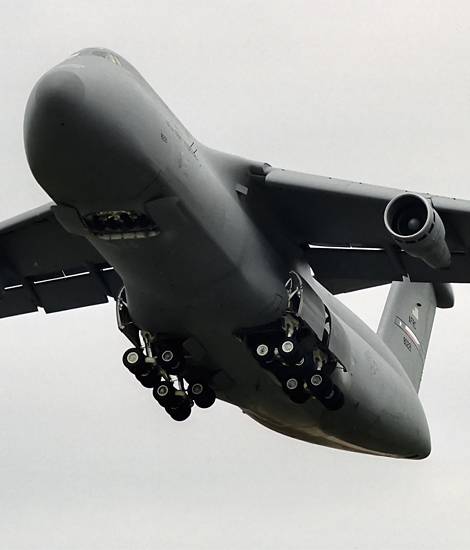
|
The Lockheed C-141 Starlifter; Ramstein AB, May 1 – 5, 2004
The End of the Starlifter Era; Text and Photograph's by Alex van Noye
Next to the C-130, also the Lockheed C-141 Starlifter is an aircraft which is often seen at Ramstein Air Base. The
Starlifter was designed from the beginning of the 60s. The aircraft is now operational in the last days of its career.
Eventually all Starlifters will be replaced by the Boeing C-17 Globemaster III.
The Lockheed C-141 Starlifter is a military strategic cargo aircraft in service with the Air Mobility Command (AMC)
of the United States Air Force (USAF). The aircraft is next to the AMC also widely used in the Air Force Reserve
Command (AFRC) and the Air National Guard (ANG). The Starlifter was introduced as the replacement for the piston
engine equipped C-124 Globemaster II. In total, the USAF received 285 Starlifters from 1965. The Starlifter is
currently almost 40 years in service at the USAF. The last Starlifters will be replaced by the Boeing C-17
Globemaster III in the next 2 years. Most aircraft of the Starlifter fleet are already replaced by this type.
The major part of the airlift fleet of the USAF was using propeller driven aircraft at the beginning of the 60s.
Most of these aircraft were outdated transport aircraft. The USAF had a strong need for aircraft which were powered
with jet engines. The USAF ordered 48 Boeing C-135 Stratotankers as an intermediate step. This aircraft was not
suited, because the loading doors were on the side of the aircraft instead of the rear side. In the spring of
1960, the specification was released for Requirement 182. This specification con- tained the requirements for
a design of a cargo transport aircraft with strategic capabilities. The aircraft had a minimum operational
range of 6,500 km and it had to carry a load of 27,000 kg. The aircraft had also the requirement to operate
from low altitude for cargo or paratrooper droppings. Several aircraft manufacturers like Boeing, Lockheed and
General Dynamics responded to the assignment.
Lockheed entered the competition with a unique model called Model 300. This design was the first aircraft which
was from the beginning developed as a jet driven aircraft. The Model 300 had a high arrow wing configuration with
4 engines which were mounted under the wing. The turbofan engines of the type TF-33 had a thrust of 21,000 pounds.
An important aspect was the cabin floor which hung only 50 cm above the ground. It was easy to load cargo in the
hold from the rear. The 2 rear side doors
|
|
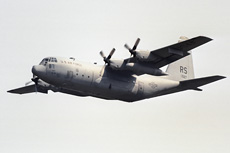
|
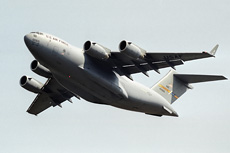
|
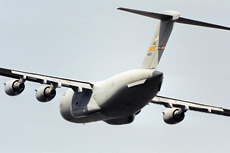
|
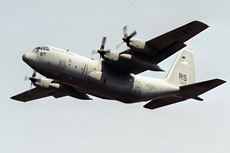
|
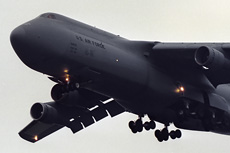
|
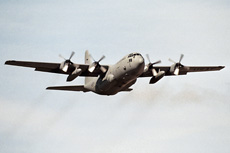
|
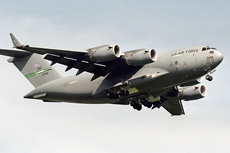
|
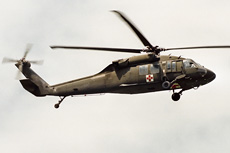
|
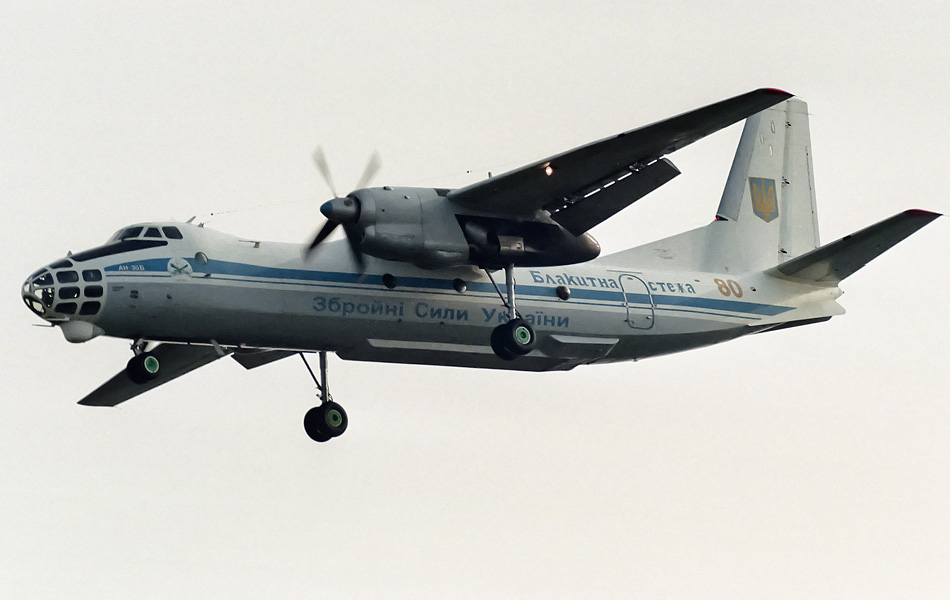
|
were designed for easy parachutist droppings. The first parachute jump from a jet driven aircraft took place in 1965
from a Starlifter. The rear cargo doors could be opened in flight; the aircraft meets therefore the requirement to drop
cargo in flight. The Starlifter was able to carry more volume than other aircraft types due to its highly placed wing
design. The Starlifter was able to lift loads of 32,136 kg over short distances. The aircraft was also able to carry
154 soldiers, 123 paratroopers or 80 wounded people. On March 13, 1961, President John F. Kennedy decided to buy the
C-141 Starlifter for the USAF. A contract was signed for the purchase of 5 aircraft. The aircraft received the name
C-141 Starlifter at the same time. The first aircraft was assembled in record time at the Lockheed plant in Mariette,
Georgia. The first Starlifter flew on August 22, 1963. Lockheed and the USAF started the test program for the delivery
of 284 Starlifters. The Starlifters were delivered to the USAF from 1965.
The Starlifter started its operational career with a series of intensive flight testing until the first delivery to
the AMC on October 19, 1964. The 1707th Air Transport Wing at Tinker AFB in Oklahoma was the first unit which received
the Starlifter. This wing was the training unit of the USAF to train pilots for the transport aircraft. The tests were
continued and a Federal Aviation Authority type certificate was issued on January 29, 1965. The first delivery to an
operational unit was on April 23, 1965. The 44th Air Transport Squadron of the 1501st Air Transport Wing at Travis
AFB in California was the first operational unit with the Starlifter. The operational tests were still running when
the aircraft was deployed during the Vietnam War. The C-141 was rapidly deployed on flights to and from the combat
zones. The C-141 Starlifter was an excellent aircraft for the evacuation of wounded soldiers and released prisoners
of war during the Vietnam War. The Starlifter was often used to fly these kinds of passengers to the United States.
In 1973, a C-141 Starlifter landed at Hanoi in North Vietnam during Operation Homecoming. The aircraft was there to
pick up soldiers who have been released by the North Vietnam Army. The Military Airlift Command (MAC) was disbanded
in 1992. All C-141 Starlifters which flew for this part of the USAF were re-assigned to the Air Mobility Command (AMC).
The aircraft of the Air Force Reserve Command (AFRC) and the Air National Guard (ANG) were also transferred to the AMC.
The Starlifter participated in 2004 also in various airlift operations in Iraq and Afghanistan. The only units which
use the Starlifter at this moment are the AFRC units. The other branches of the USAF are replaced by the Boeing C-17
Globemaster III.
In total there are 3 variants of the Starlifter in use within the USAF, namely: the C-141A, C-141B and C-141C. The
original Starlifter model was referred to as C-141A. This aircraft was able to carry 154 passengers, 123 paratroopers
or 80 wounded people. A total of 284 C-141A Starlifters were built. The first C-141A flew from April 1965. The C-141A
can carry 10 standard 463L pallets and has a total payload of 28,900 kg. It soon became clear that the C-141A could
carry more weight compared with available volume; it was therefore decided to convert 270 C-141A Starlifter aircraft
to C-141B Starlifter. The C-141B was an extended version of the C-141A. The conversion program took place between 1977
and 1982. The fuselage of the Starlifter was extended by 7.11 meters. The new capacity of the C-141B was now 205
passengers, 168 paratroopers and 103 wounded persons. A total of 63 C-141B Starlifters were converted to C-141C
Starlifter in the 90s. These aircraft had improved navigation and avionics. The aircraft received a full glass cockpit
which was needed to meet the new operational requirements. The last Starlifters will be phased out within 2 years.
The only current operator of this aircraft is the AFRC. The C-141 Starlifter will be replaced by the Boeing C-17
Globemaster III.
|
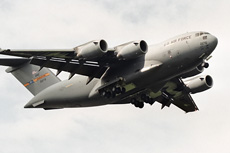
|
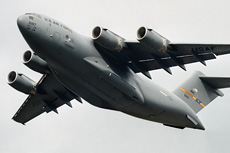
|
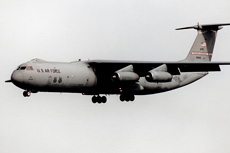
|
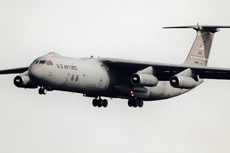
|
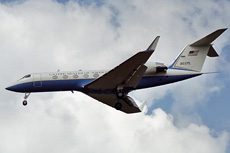
|
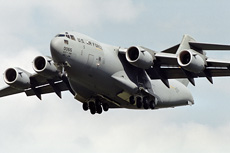
|
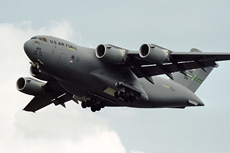
|
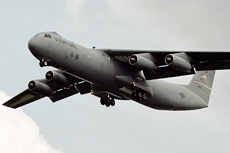
|
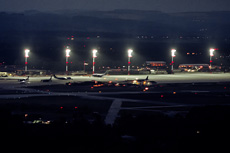
|
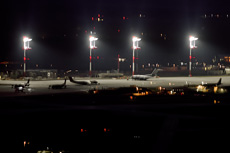
|
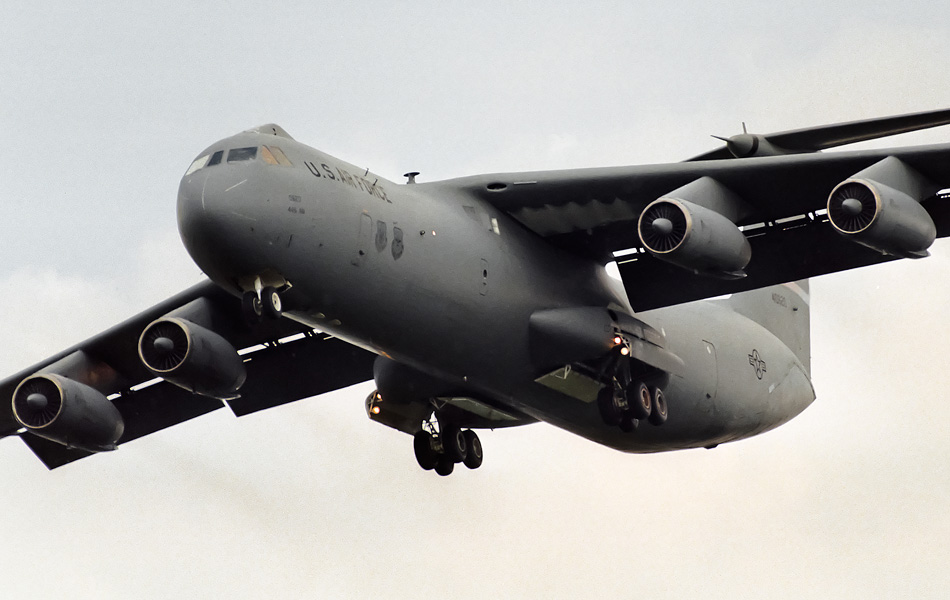
|
|
|

|







